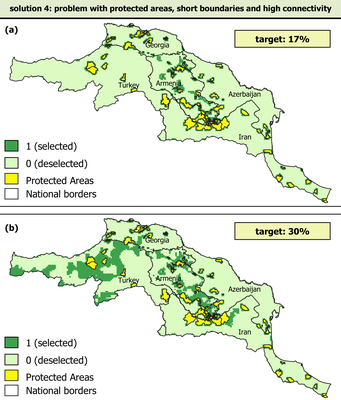Identification of priority conservation areas for the Persian leopard (Panthera pardus saxicolor) and prey species in the Lesser Caucasus
Pauline Holz
Leopards (Panthera pardus) are declining rapidly worldwide due to massive anthropogenic pressure. Their conservation needs large-scale connectivity among protected areas with good prey availability. The aim of my study was to find out new priority conservation areas for the Persian leopard (Panthera pardus saxicolor) in the Lesser Caucasus (220,000 km²) with good potential for three of its main prey species the bezoar goat (Capra aegagrus), Gmelin’s mouflon (Ovis gmelini gmelini), and red deer (Cervus elaphus). I identified their distributional hotspots through species distribution models modelled with MaxEnt. I ran the spatial prioritization algorithm prioritizr to determine priority conservation areas under economic and ecological objectives. The algorithm calculated priority conservation areas (58000 km²) mainly located in the border region between Armenia, Azerbaijan, and Iran, in north-eastern Turkey, and in north-eastern Armenia. The calculation proves that large suitable areas for new protected areas for the Persian leopard and three of its main prey species in the Lesser Caucasus exist.


